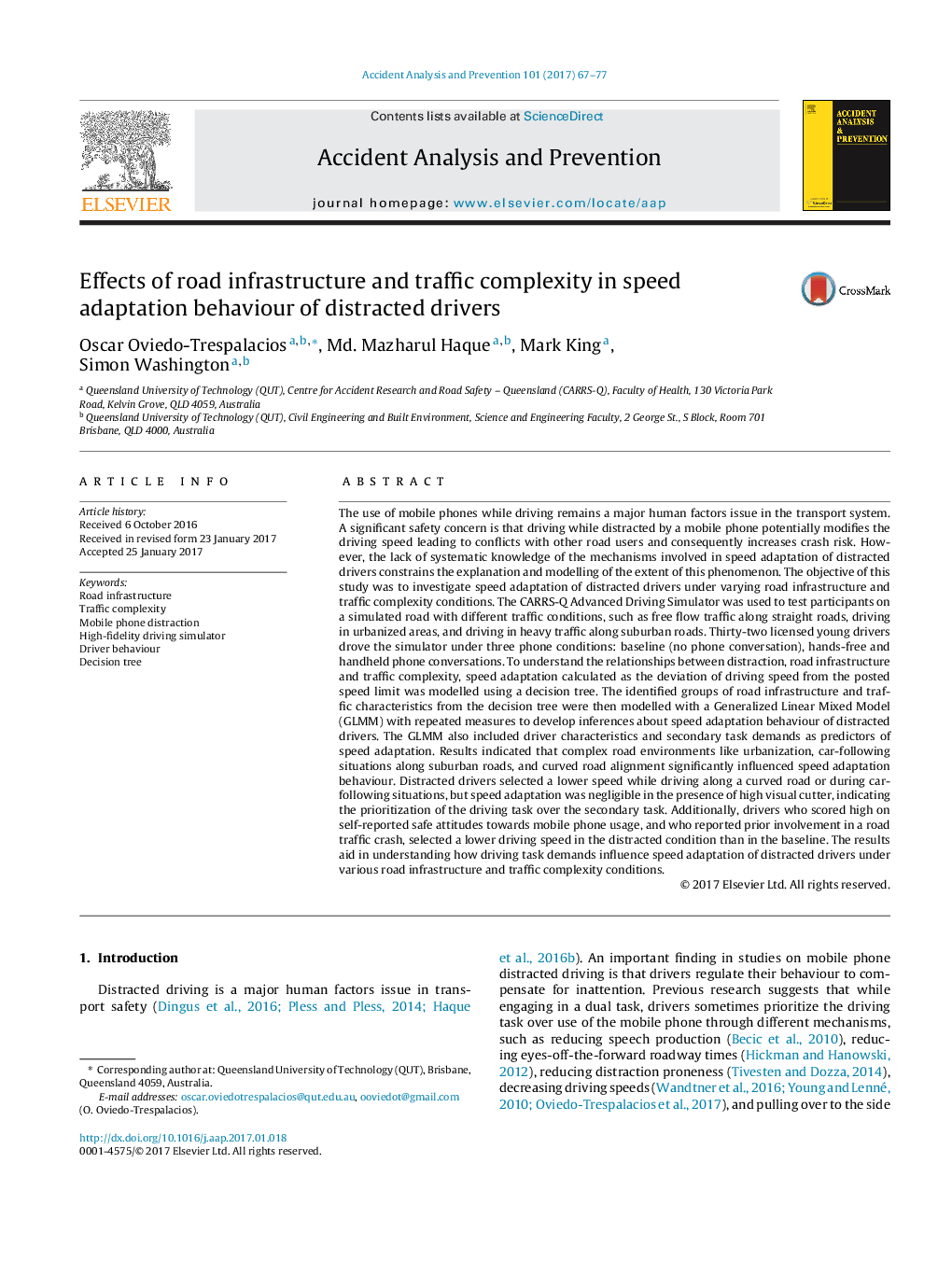| کد مقاله | کد نشریه | سال انتشار | مقاله انگلیسی | نسخه تمام متن |
|---|---|---|---|---|
| 4978725 | 1452898 | 2017 | 11 صفحه PDF | دانلود رایگان |
عنوان انگلیسی مقاله ISI
Effects of road infrastructure and traffic complexity in speed adaptation behaviour of distracted drivers
ترجمه فارسی عنوان
اثرات زیرساخت های جاده ای و پیچیدگی ترافیکی در رفتار سازگاری سرعت رانندگان منحرف شده
دانلود مقاله + سفارش ترجمه
دانلود مقاله ISI انگلیسی
رایگان برای ایرانیان
کلمات کلیدی
زیرساخت جاده، پیچیدگی ترافیکی، حواس پرتی تلفن همراه، شبیه ساز رانندگی با وفاداری بالا، رفتار راننده، درخت تصمیم گیری،
موضوعات مرتبط
مهندسی و علوم پایه
مهندسی شیمی
بهداشت و امنیت شیمی
چکیده انگلیسی
The use of mobile phones while driving remains a major human factors issue in the transport system. A significant safety concern is that driving while distracted by a mobile phone potentially modifies the driving speed leading to conflicts with other road users and consequently increases crash risk. However, the lack of systematic knowledge of the mechanisms involved in speed adaptation of distracted drivers constrains the explanation and modelling of the extent of this phenomenon. The objective of this study was to investigate speed adaptation of distracted drivers under varying road infrastructure and traffic complexity conditions. The CARRS-Q Advanced Driving Simulator was used to test participants on a simulated road with different traffic conditions, such as free flow traffic along straight roads, driving in urbanized areas, and driving in heavy traffic along suburban roads. Thirty-two licensed young drivers drove the simulator under three phone conditions: baseline (no phone conversation), hands-free and handheld phone conversations. To understand the relationships between distraction, road infrastructure and traffic complexity, speed adaptation calculated as the deviation of driving speed from the posted speed limit was modelled using a decision tree. The identified groups of road infrastructure and traffic characteristics from the decision tree were then modelled with a Generalized Linear Mixed Model (GLMM) with repeated measures to develop inferences about speed adaptation behaviour of distracted drivers. The GLMM also included driver characteristics and secondary task demands as predictors of speed adaptation. Results indicated that complex road environments like urbanization, car-following situations along suburban roads, and curved road alignment significantly influenced speed adaptation behaviour. Distracted drivers selected a lower speed while driving along a curved road or during car-following situations, but speed adaptation was negligible in the presence of high visual cutter, indicating the prioritization of the driving task over the secondary task. Additionally, drivers who scored high on self-reported safe attitudes towards mobile phone usage, and who reported prior involvement in a road traffic crash, selected a lower driving speed in the distracted condition than in the baseline. The results aid in understanding how driving task demands influence speed adaptation of distracted drivers under various road infrastructure and traffic complexity conditions.
ناشر
Database: Elsevier - ScienceDirect (ساینس دایرکت)
Journal: Accident Analysis & Prevention - Volume 101, April 2017, Pages 67-77
Journal: Accident Analysis & Prevention - Volume 101, April 2017, Pages 67-77
نویسندگان
Oscar Oviedo-Trespalacios, Md. Mazharul Haque, Mark King, Simon Washington,
